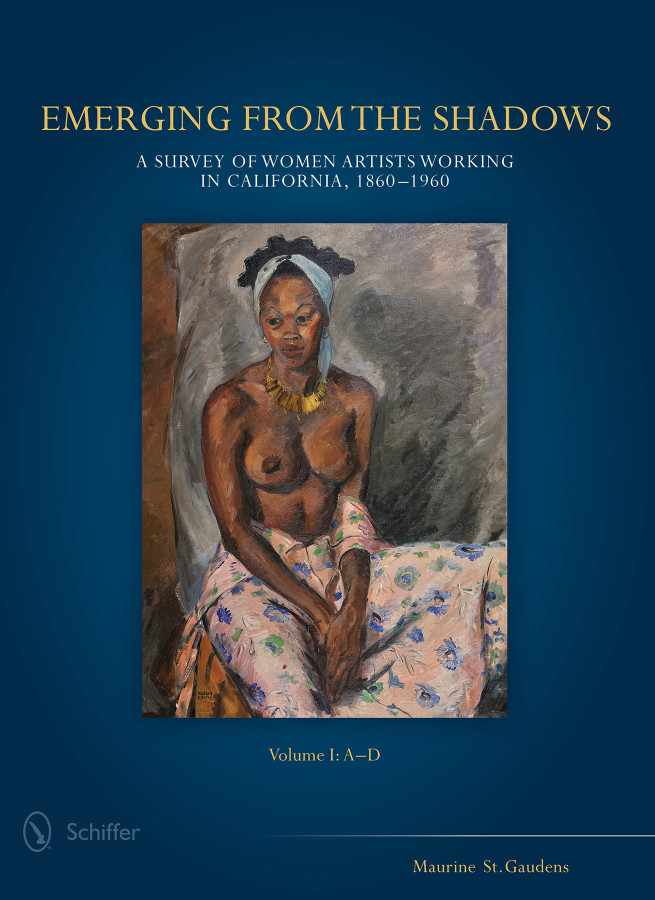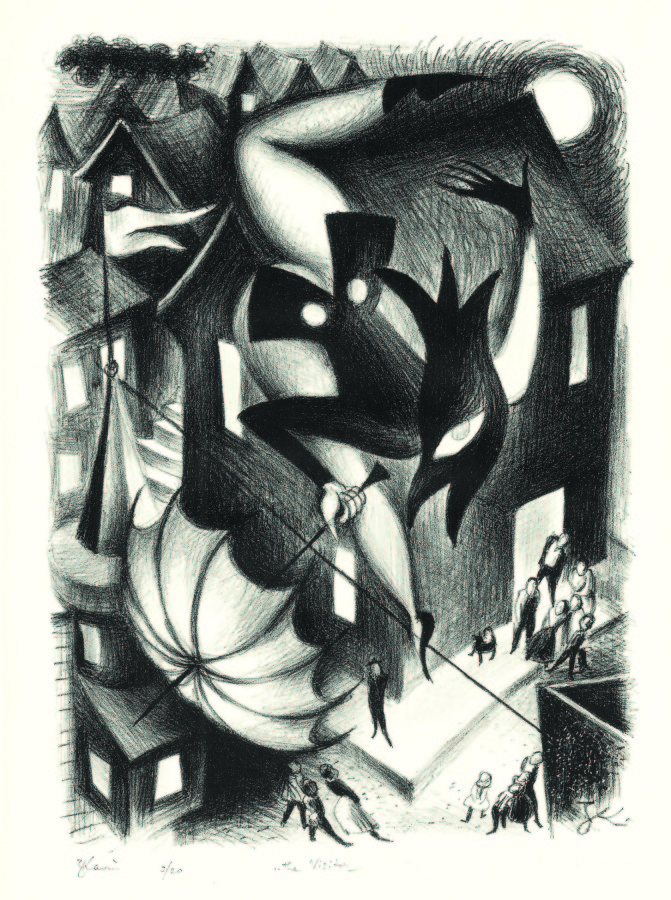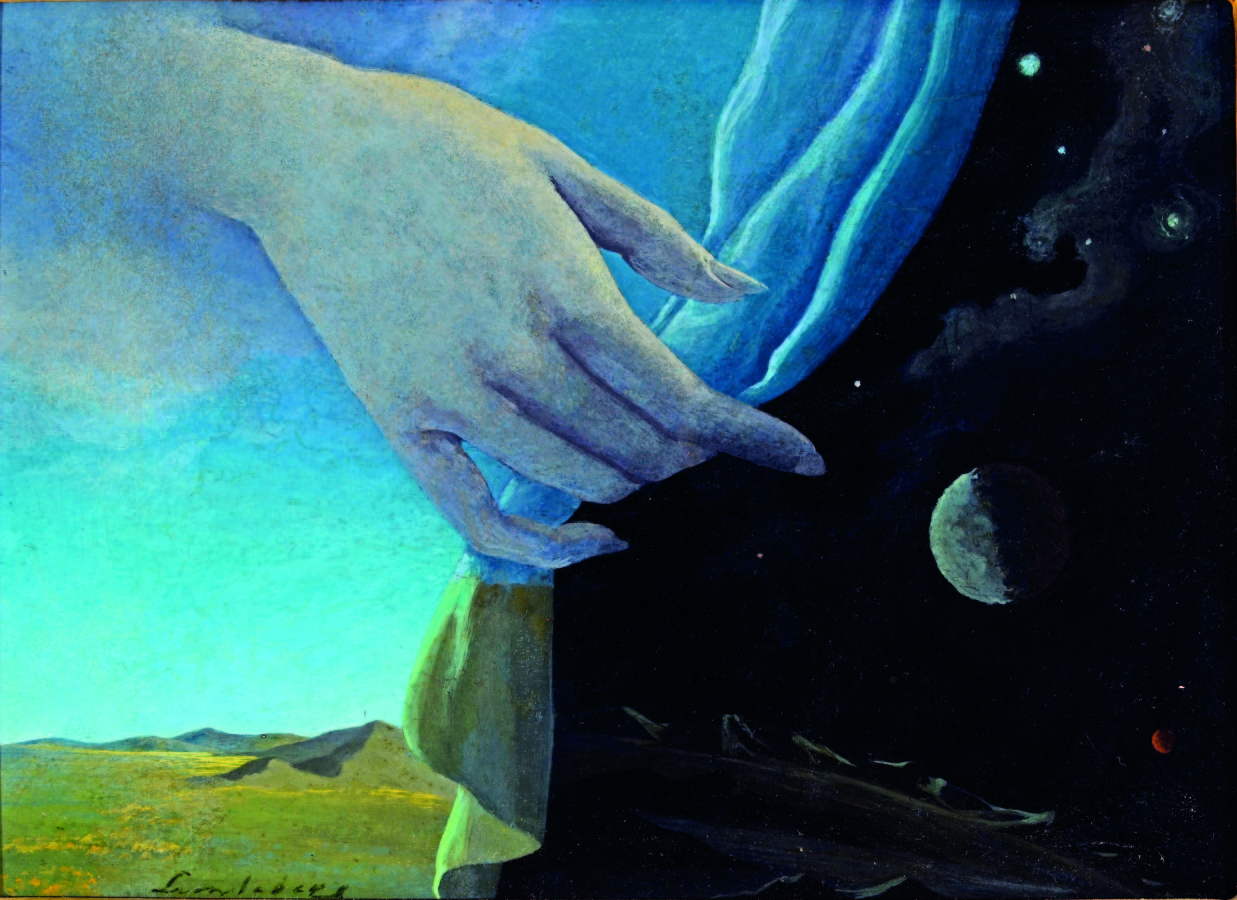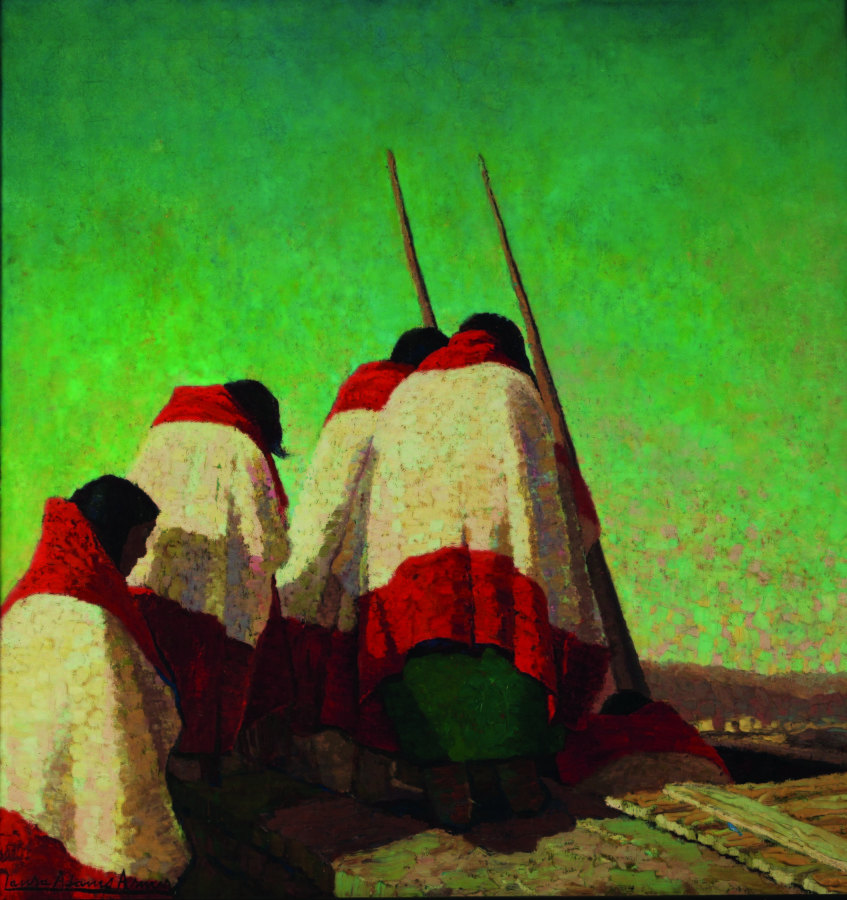Leigh Donlan reviews a new series of art books:

Book cover photo featuring ‘Untitled (Female Figure)’ by Marian Curtis, n.d., oil on canvas, 40 × 30 in., signed l/l. Photo: Martin A. Folb, PhD
These were strong, competent and talented women who for whatever reason had been ignored for their accomplishments. I felt it was time for them to be recognized as artists and to emerge from obscurity… To actually see examples of the artist’s’ work, along with a signature example was for me essential in making these women real. – Maurine St. Gaudens
In a new four-volume series, Maurine St. Gaudens – a California-based fine art conservator – profiles 320 women artists who lived and/ or worked in California between the years 1860 and 1960. Because so little information was publicly available about these artists, this monumental survey – Emerging from the Shadows – required an enormous amount of research by St. Gaudens and her team over seven years.

Edna Stoddart, ‘Garden in Oaxaca’, n.d., oil on board, 12 × 12 in., signed l/m and annotated verso. Courtesy of Calabi Gallery. Photo: Camille M. Palmer.
While this series focuses on fine art, many of the women excelled in multiple art forms – such as music, theatre, film and writing – in which they sought to find their most authentic voice. Their stories are as diverse as their chosen mediums. One unifying trait amongst them all was their fearlessness. These restless spirits followed their hearts and often travelled the country and the world – in a time when travel meant boats and trains – to find inspiration and to quench their desire to learn.
… A painter by the name of Abigail Tyler Oakes. Mrs. Oakes, as she signed her art, was painting in Alameda County in the 1850s and 1860s. She came to California from Massachusetts with her husband who was employed by the San Francisco Bulletin. She did these large remarkable landscapes of the Bay Area executed in a Hudson River Valley style. When you consider what it entailed at the time for her to travel west from Massachusetts to San Francisco and then what it involved in order for her to continue her work as an artist, it had to have been a challenge but, still, what an incredibly amazing experience this must have been.
Many of the artists were political activists and humanitarians. A healthy number were blacklisted Communists who fled Los Angeles and San Francisco during the Roosevelt administration and sought refuge in distant towns or in Europe. Why we have not heard of many of these women is a question addressed in St. Gaudens’ series, which has become a work in progress. As more artists emerge, they will be added.
It was not considered “womanly” to pursue a career as an artist during these years when “good girls” were expected to stay home, marry and breed. Refusing to conform to social standards earned many women a reputation for being “harsh” and intimidating, even crazy. Many of them were early feminists and suffragists who married multiple times, if at all. Those who married other artists often discovered their own work and efforts sidelined by the prioritized male’s, particularly during the Depression when surviving as an artist at all was nearly impossible. Yet, these women managed to produce significant art.

Zena Kavin, ‘The Visitor’, c. 1935, lithograph on cream wove Warrens Olde Style paper, 13.5 × 10.5 in. (image), ed. 3/20, initialed in the image l/r and signed l/l.
Because of the groundwork laid by these generations of women, later generations could more easily fulfill their own dreams to create and sell their work. The women profiled in the series were the founding members of many art collectives, societies and movements throughout California. The Feminist Art Movement would not take flight until the 1960’s, and these were the women who worked quietly, sometimes loudly, to make it happen.
I ask St. Gaudens about the predominance of Caucasians in the books:
Keep in mind we did not pursue artists and primarily used those we discovered in collections. With this in mind, we were hoping we would find non-Caucasian artists to include in the book. As we delved further into our research we particularly started looking to identify minority women, which unfortunately proved difficult. We did learn of two African American woman artists, one working in the Los Angeles area and another in the San Francisco area in the late-nineteenth century, but finding examples of their work was impossible at the time. More recently, we have located several examples of each of these artists’ works in collections, and in the future would like to add these women to our website artist index or include them in additional volumes of the book… We hope that, with the new emphasis being placed on recognizing women artists from every decade whose work and careers have long been ignored, that more minority artists will emerge.
Several Japanese women included in the profile experienced the Japanese family encampments in California. Ruth Asawa, born in Norwalk in 1926, was interned with her family at the Santa Anita Race Tracks for six months where they lived in horse stables. Fortunately, during their imprisonment Osawa learned to draw and paint with other interned artists. She went on to study multiple art forms at Black Mountain College in North Carolina, and her teachers included dancer Merce Cunningham and painter Josef Albers. Her wire sculptures are most compelling – intricately woven designs of copper and brass depicting worlds within worlds.
Helen Lundeberg was born in 1908 and spent most of her life in Pasadena. She originally studied writing but also showed exceptional artistic skills. She enrolled at Stickney Memorial Art School while continuing writing and in 1934, she wrote and published a manifesto for the new art movement known as New Classicism with Lorser Feitelson, whom she eventually married. In the 1950’s, her paintings evolved into a hard-edge abstraction, which emphasized the edges of forms as much as the forms themselves.

Helen Lundeberg, ‘The Veil’, n.d., oil on board, 9 × 12 in., signed l/l. ©The Feitelson/Lundeberg Art Foundation
Born in Sacramento in 1874, Laura Adams Armer settled in Berkeley. She exhibited her illustrations and paintings throughout the Bay Area, and in 1923, she lived on a Navajo reservation in Northern Arizona to study their folklore and culture after gaining trust from the tribe who deemed her as “the woman who wears the turquoise.” She went on to write and illustrate children’s books based on Indian tribal culture.
Agnes Pelton immigrated from Germany through Holland with her family during the late 1880’s, settling in Brooklyn, New York. She taught music before settling in Cathedral City, California near Palm Springs. Pelton’s later abstract works focused on “the essence beyond physical nature” and are marked by an illuminating glow. She spent her later years working in isolation, supporting herself by painting realistic landscapes while pursuing her true passion for these visionary, luminous abstractions.

Agnes Pelton, ‘Spring Moon’, 1942, oil on canvas, 28 × 21 in., signed and dated l/r. Photo: Martin A. Folb, PhD
Claire Mahl Moore was born in New York City in 1912 to Russian Socialist parents who raised her to express herself freely. Her oeuvre ranged from woodcuts to lithographs which often depicted the resistance shown towards women artists. One evening while out drinking beer with Jackson Pollock, Pollock told her (as he told many women artists) “You have to have a penis to be a great artist,” to which Moore replied “If you could do what you’re supposed to with your penis, you wouldn’t need it for a paintbrush!”
These are but a few of the fascinating stories within Emerging from the Shadows. St. Gaudens hopes that the series will broaden its scope in terms of time and culture, and that it will serve as the impetus for exhibits. For now, it fills a critical gap in women’s history, art history and California history.
The visionary artwork was most appealing to me. These artists often gave voice to those who had difficulty expressing themselves; they were also catalysts of social change. Many of these women were far ahead of their time. Take, for example, Kathleen Taylor Upper’s Surreal Priestess. To modern eyes, her illustration could be of an average settler at Burning Man, yet she produced it in the 1930’s. While little personal information is available on Taylor Upper, her lithographs spark curiosity and I wondered about her life. The only traceable information were factual in nature – exhibits and organizations. And we know she lived in Venice, California where, if she were alive today, she most likely wouldn’t be able to afford to live there as an artist given its recent gentrification.

Kathleen Taylor Upper, ‘Untitled (Surreal Priestess)’, n.d., lithograph on paper, 17.25 × 17.25 in., ed. 25, signed verso. Photo: Martin A. Folb, PhD
In her final days of 1988 Los Angeles, painter Belle Goldschlager Baranceanu was found dancing naked in the halls of her retirement home, singing “Aphrodite wears no nightie!” Aphrodite, archetype of love and beauty, born of sea foam, is the perfect archetype for the women in this series. Long associated with “difficult,” her energy is transformative and not for the faint of heart. She represents a tremendous force of change because of her intense passion and creativity. She is a catalyst, as were these women. But they were often misunderstood, or dismissed as hobbyists; their inability to attract the high-profile attention of their male counterparts often relegated them to obscurity. This series is a glorious effort to rectify the affront.



Hello. My husband is the Great Grandson of Edna Stoddart. We have many of her paintings.
How wonderful. Let us know where we can see more of her work.